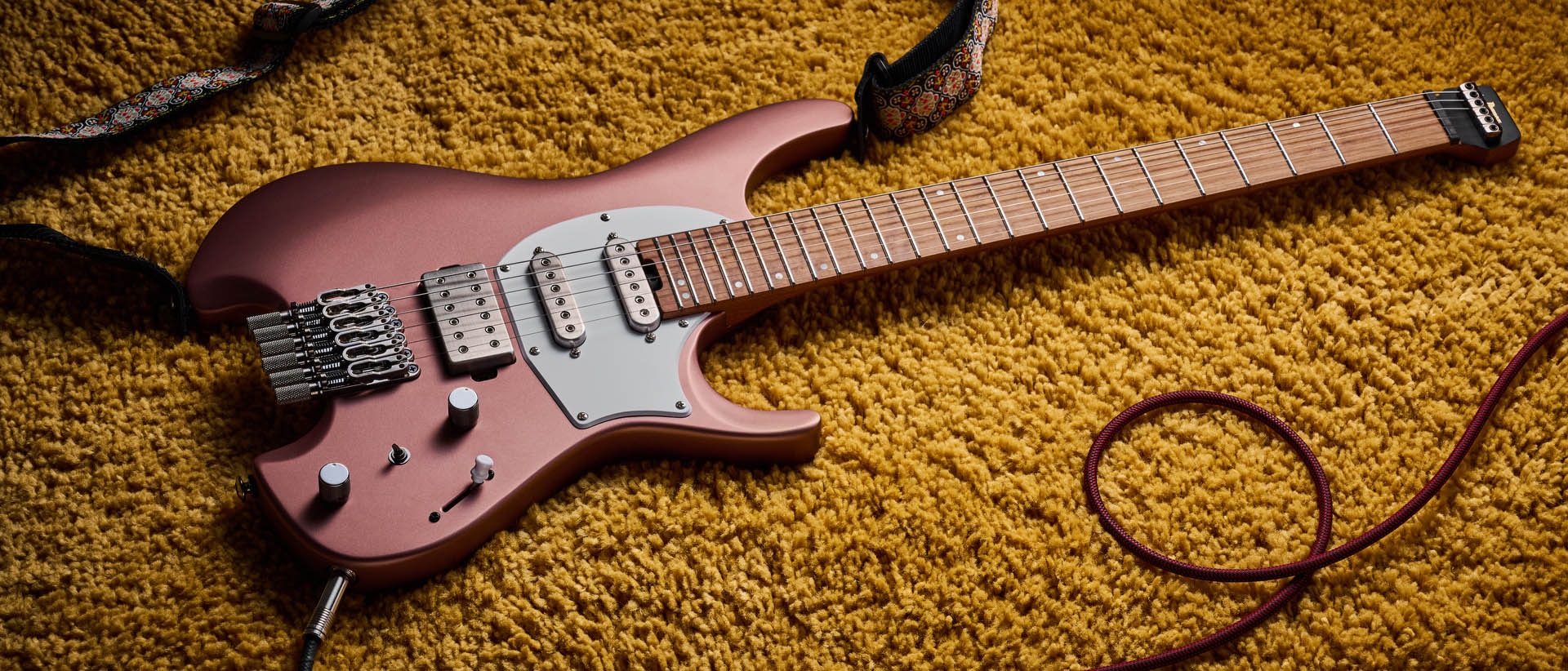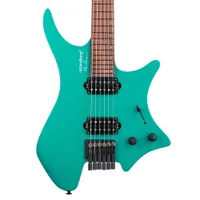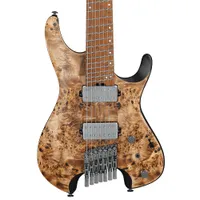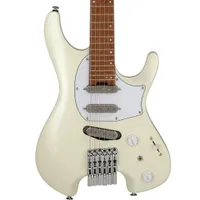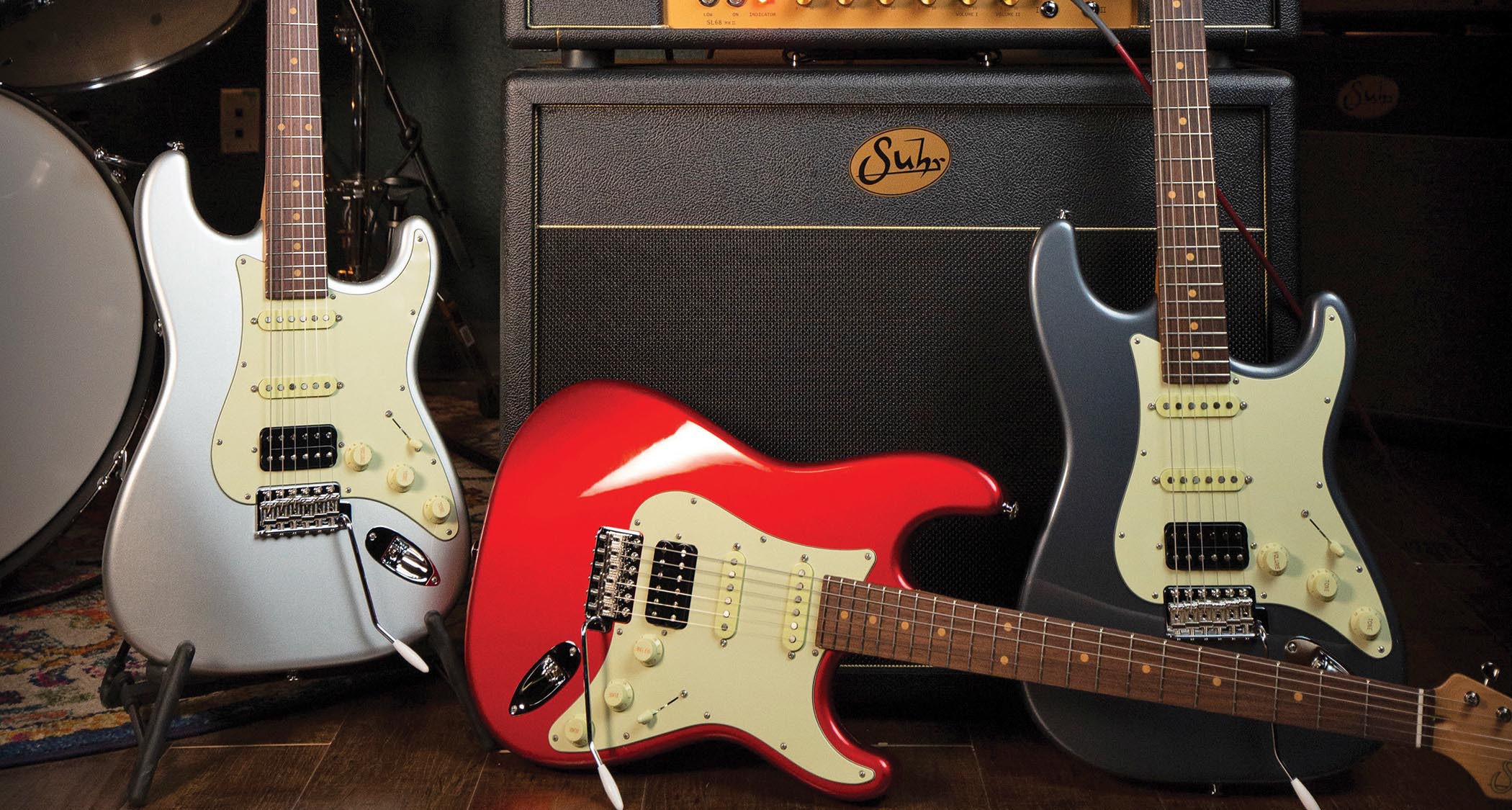Guitar World Verdict
The headless modernity of it all might make the Q54W a difficult guitar for all players to truly love, but it’s an easy guitar to like, a very easy guitar to play, and one that presents so many core tones that it feels like a pre-modded instrument for rock and pop, metal and fusion, and for thinking beyond genre and style.
Pros
- +
A lot of core tones.
- +
Sensible neck profile.
- +
Super lightweight and forgiving ergonomics.
- +
That bridge is a quality piece of hardware.
Cons
- -
Limited color options.
- -
Ibanez has one of the coolest headstocks ever... But not here.
- -
Bridge humbucker doesn't clean up that nicely.
You can trust Guitar World
What is it?
Where were you when you first saw someone playing a headless electric guitar and who was playing it? How you will respond to this question could be instructive in how you receive this Ibanez Q Series model.
Whether you still regard the revival of headless guitars a novelty – the preserve of the maverick virtuoso or village eccentric – or whether you believe it to be simply a more rational form for the instrument, like, Why do we need a headstock at all?
It’s a generational thing. Older readers might think of the late fusion doyen Allan Holdsworth, or recall Eddie Van Halen’s radicalism on a Steinberger GL2T. It is hard to think of the headless guitar and not think of David Bowie’s Tin Machine era.
The Man Who Fell To Earth, Allan Holdsworth, EVH; there is a generation of players who should be forgiven for believing the headless guitar is an otherworldly instrument best left for otherworldly players.
Younger readers might see it a bit differently, however, looking to the likes of Australian instrumentalist Plini and his Strandberg Boden or Ibanez signature guitar artist, Ichika Nito, and seeing the headless guitar as this enabler of next-generation technique and sound, the ne plus ultra of electric guitar modernity… Again, why do we need a headstock at all?
A big part of the appeal is obvious before even taking the Q54W out of its gig bag. It’s so light, so compact. Where is the rest of it? We’d hesitate to call it travel-friendly because that can ghettoize an instrument but it is just that, weighing just a couple of ounces over five pounds.
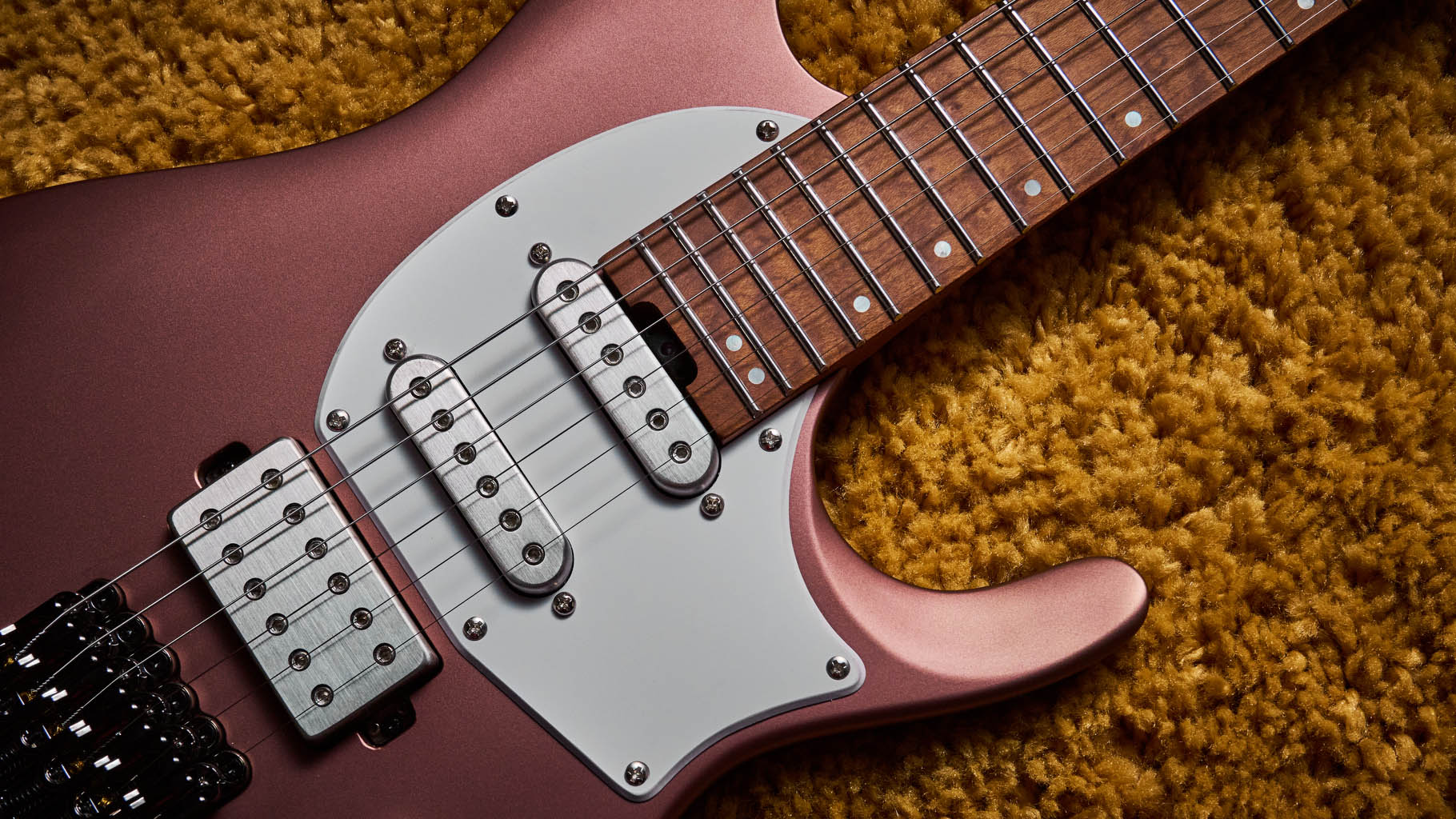
And it really does look like a guitar for 21st-century adventures in tone and technique, with its Copper Metallic Matte finish perhaps a sign that guitar makers are now looking away from Motor City automobiles and to iPhones for finish inspiration.
All the latest guitar news, interviews, lessons, reviews, deals and more, direct to your inbox!
There is an obvious similarity to the Ichika Nito ICHI10. Here, too, we have that double cutaway body shape with the radical scoop that exposes the tuners on the Ibanez Mono-Tune bridge.
The question is whether it was worth sacrificing one one of the most iconic headstocks in electric guitar in pursuit of a radical new high-performance platform
But where the ICHI10 has the SSS configuration, skirted Stratocaster-style control knobs, the Q54W presents us with a humbucker at the bridge, and two R1 single-coil pickups at the middle and neck positions, knurled metal dials in Cosmo black to match the bridge, and that HSS setup gives us even more core tones.
Here the five-way blade-style pickup selector switch working in concert with the Alter Switch for Ibanez’s Dyna-Mix 9 switching system offering nine core tone variations.
It’s only slight, but the Q54W is a lot of guitar. The question is whether it was worth sacrificing one one of the most iconic headstocks in electric guitar in pursuit of a radical new high-performance platform.
Specs

- Launch price: $1,099/£959/€1,049
- Made: Indonesia
- Type: Headless six-string electric guitar
- Body: Nyatoh
- Neck: Three-piece roasted maple and bubinga / Wizard C profile
- Fingerboard: Roasted birds-eye maple, 12" radius with Mother of Pearl offset dot inlays
- Scale length: 25.5"/648mm
- Nut/width: Plastic / 42mm
- Frets: 24, jumbo stainless steel
- Hardware: Ibanez Mono-Tune bridge, white single-ply pickguard, chrome
- String spacing at bridge: 54mm
- Electrics: Q58 humbucker [bridge], 2x R1 single-coil pickups, volume, tone, 5-way selector plus Alter Switch for dyna-MIX9 switching system
- Weight: 5.2lb/2.36kg
- Options: Q54 in Flat Black and Sea Foam Green ($999/£959), Ibanez Q547PB 7-string ($1,299/£1,139)
- Left-handed options: No
- Finishes: Copper Metallic Matte
- Cases: Gig bag
- Contact: Ibanez
Build quality
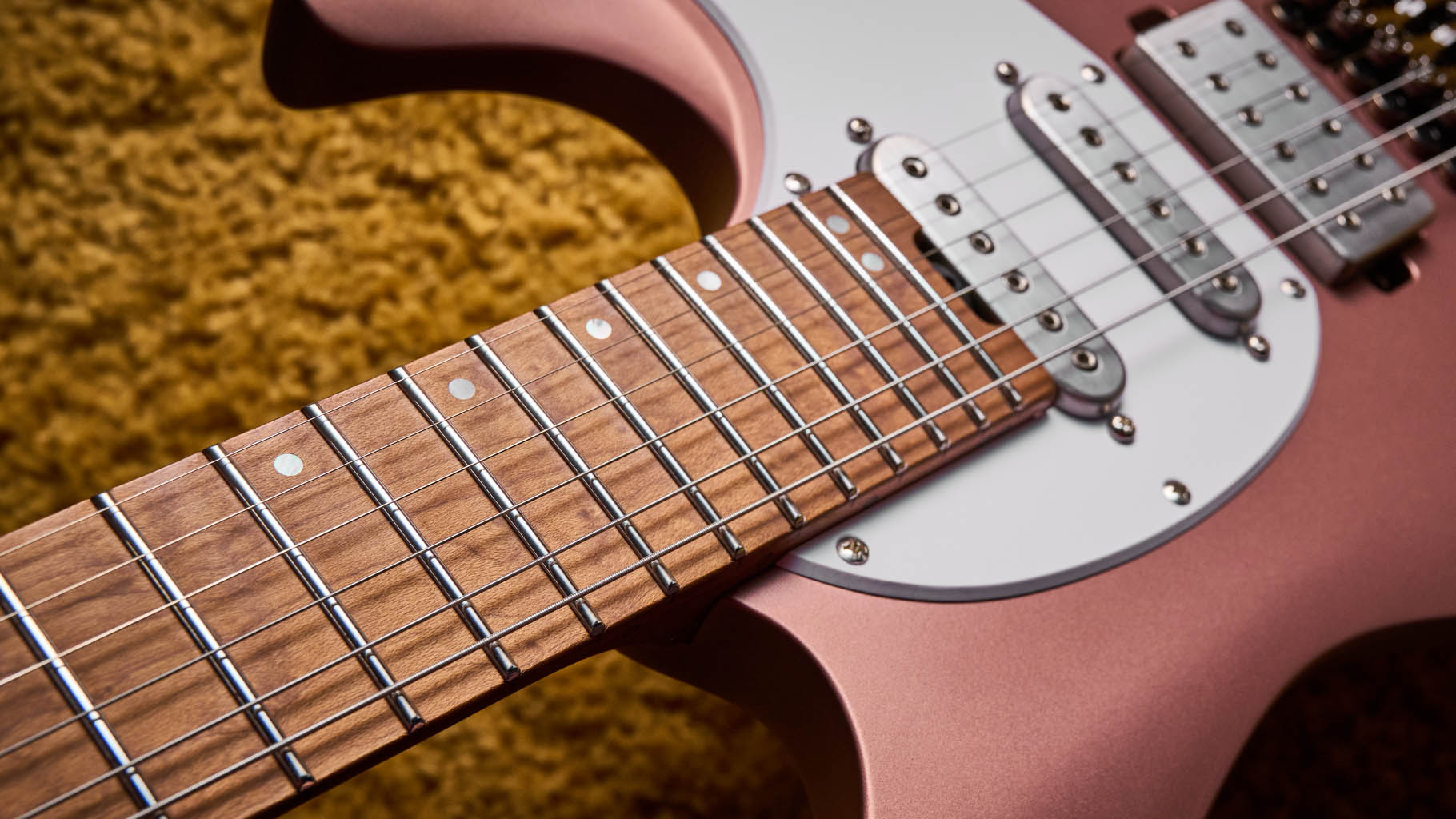
Build quality rating: ★★★★½
The Q54W is a very clean guitar with a kind of tech bro bachelor pad aesthetic, a meticulousness that is even evident in the finish. Where many satin/matte finishes are a nightmare with fingerprints, this paint job leaves no trace behind.
There’s always a bit of cognitive dissonance when tangling with a headless instrument. It might look like a short-scale, maybe even feel like it (an illusory feeling), but it’s a full, Fender-esque 25.5” scale.
How often do you hear a brand describe their new guitar's body as being fashioned from “lightweight nyatoh”? Well, here is the dictionary definition of an electric made form lightweight nyatoh. Maybe that 2024 study from Find My Guitar was on the money after all.
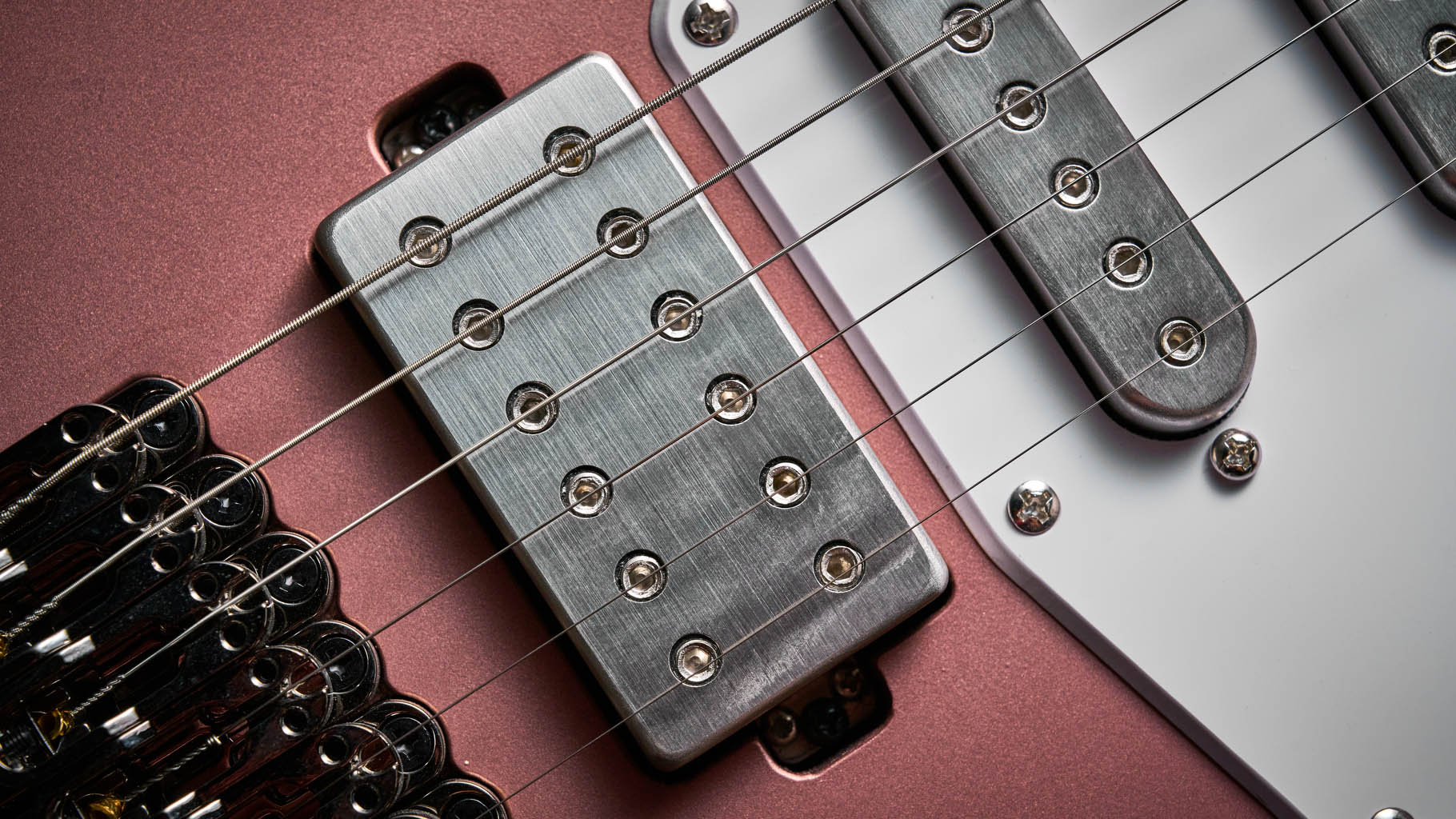
The neck is three-piece design of dark toffee-colored roasted maple with a rose-tinted bubinga center strip about the width of a thumb running through the middle to give it some fortitude, and it’s affixed to the body with an unobtrusive four-bolt joint.
It terminates in a subtle nub where the headstock would have been (there’s scarcely room to fit the Ibanez logo), with the strings snipped and held in place by the string locks. You can use regular strings, threading them through the bridge, locking them at the nut with a hex key. Easy peasy.
The roasted birdseye maple fingerboard has been left unbound, is ever-so-subtly lighter, and is nicely patterned, seating 24 jumbo frets that, again, with that stainless steel, give this the feel of a contemporary high-performance instrument.
Luminlay glow-in-the-dark side markers are present and correct, and have become industry standard for electrics at this price and for this demographic, as has the heel-mounted truss rod adjustment spoke wheel.
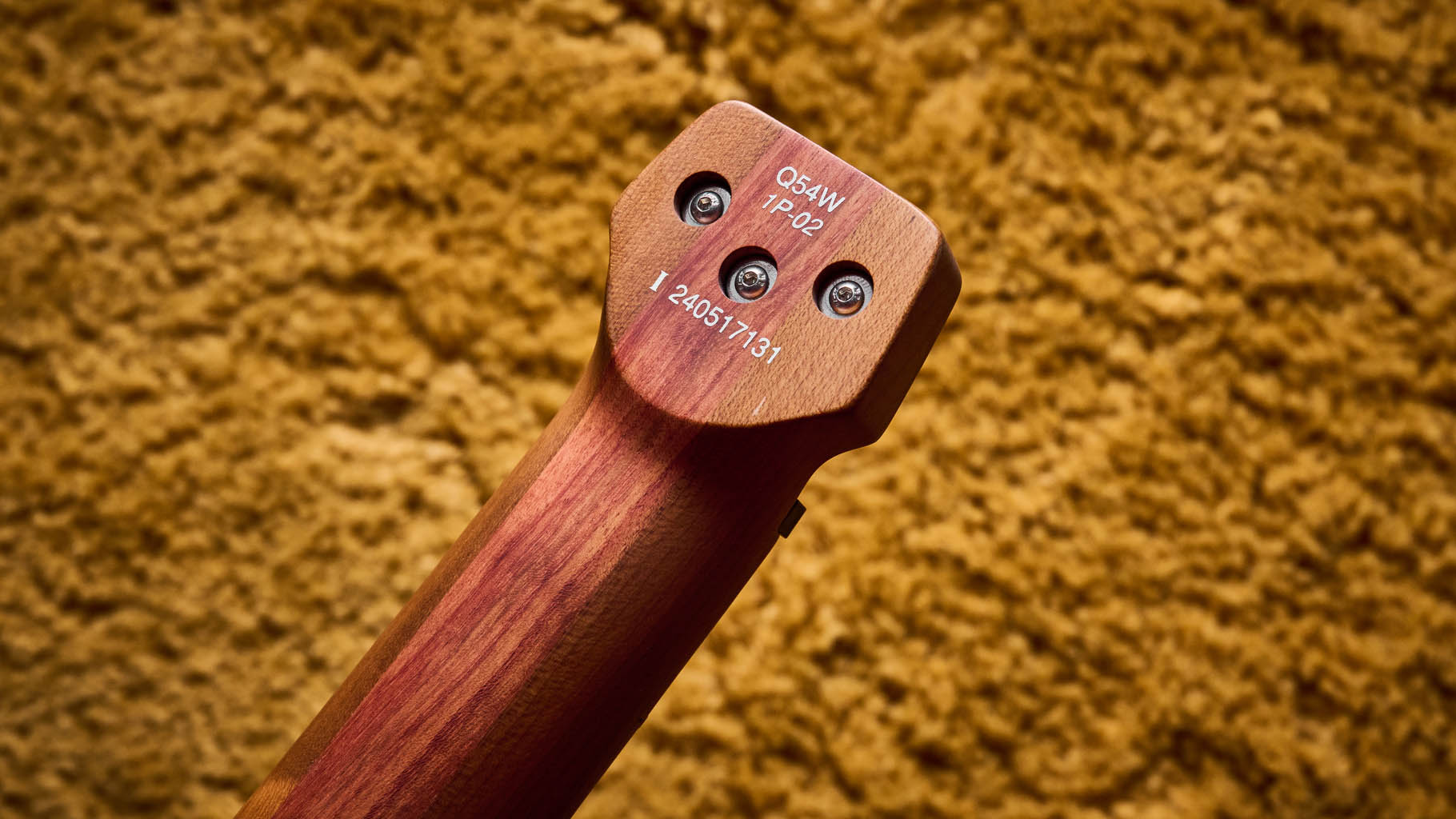
The Mono-Tune bridge is an impressive feat of engineering, tidy, low-profile, fully adjustable, with those knurled barrel tuners offering a smooth, high-ratio performance – you can pop this into Drop D in no time.
The tuning, incidentally, is super-solid. Tuned once, put back in the bag, no need to tune again. The gig bag could be a bit more heavy duty, especially seeing as this is one guitar you will not have a second’s thought about taking anywhere with you.
Playability
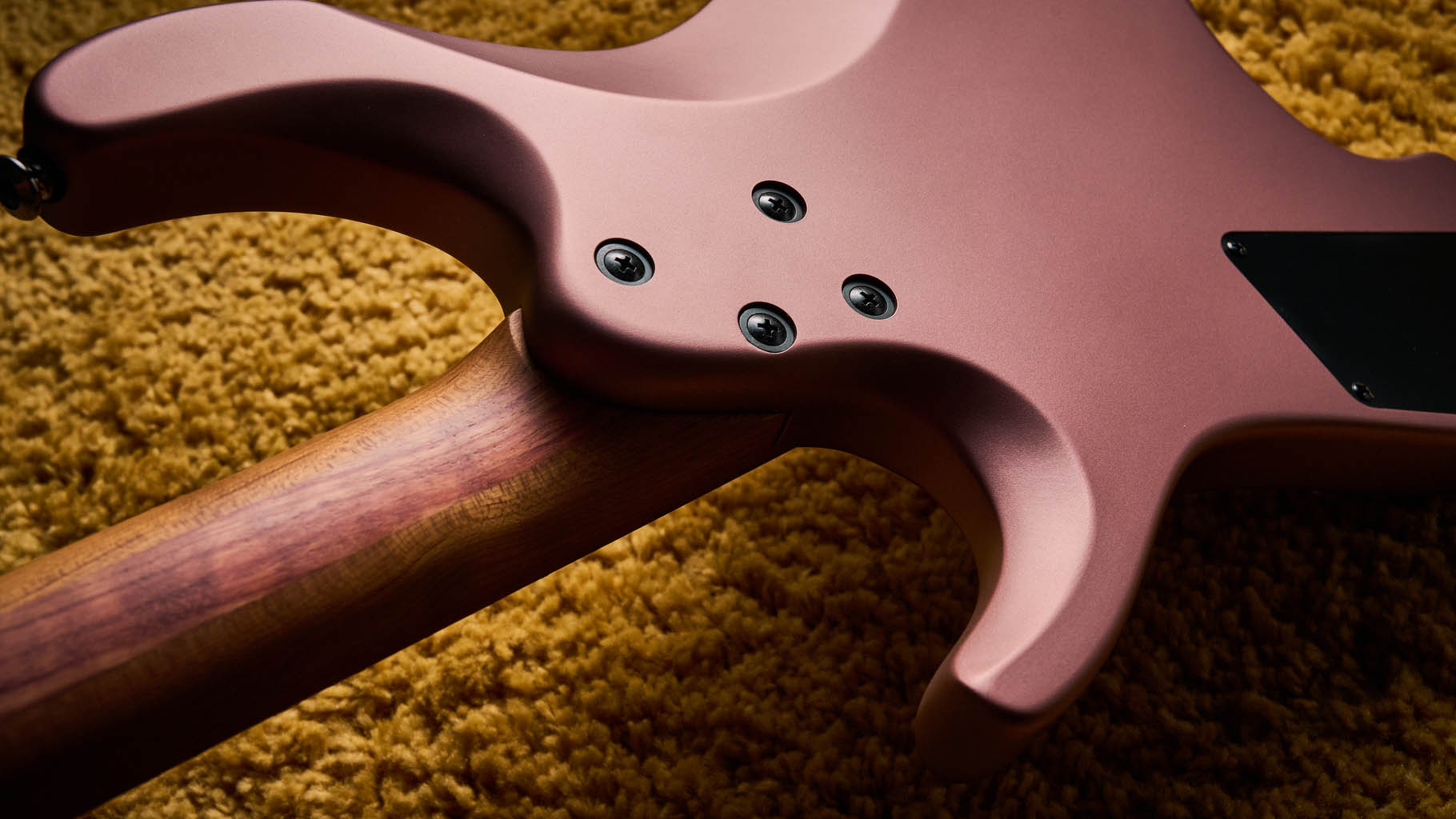
Playability rating: ★★★★½
While the neck profile of the Q54W is described as a Wizard C, it presents the fretting hand with a lot more timber than those O.G. Wizard profiles, where you had a 17mm neck depth at the first fret
The G54W feels very different to some of the high-performance builds that Ibanez made its name on during the heyday of the shred era. I have my circa ’92 RG770 for reference, and while the neck profile of the Q54W is described as a Wizard C, it presents the fretting hand with a lot more timber than those O.G. Wizard profiles, where you had a 17mm neck depth at the first fret.
That, at the time, was a revelation. Suddenly, the Ozzy Osbourne Tribute tab book became playable. But in retrospect, it was indecent. This is a more respectable 21mm at the first fret, swelling very slightly to 22mm at the 12th. Ibanez describes the neck as a Goldilocks profile; not too thick… et cetera.
They’ll get no argument here. Maybe it’s age talking, but this Wizard C neck is more comfortable over a period of time than that old speedy Wizard. It is a C but there is some shoulder to it that calls to mind the Modern D profile of Fender’s American Ultra II range, even if it lacks the X factor of that high-end range. All things considered, with its Gibson-esque 12” fingerboard radius, the neck is the least radical proposition on the Q54W.
The feel of this guitar is sumptuous, slinky, easy, and that’s with the factory 10s on it; sizing down would make it slinkier still. Stainless steel frets will readily chew up a set of electric guitar strings but they let notes glide over them, and given that playing the guitar is a an experiential endeavor, many will argue that it is better to live in the moment than worry about the longevity of your strings.
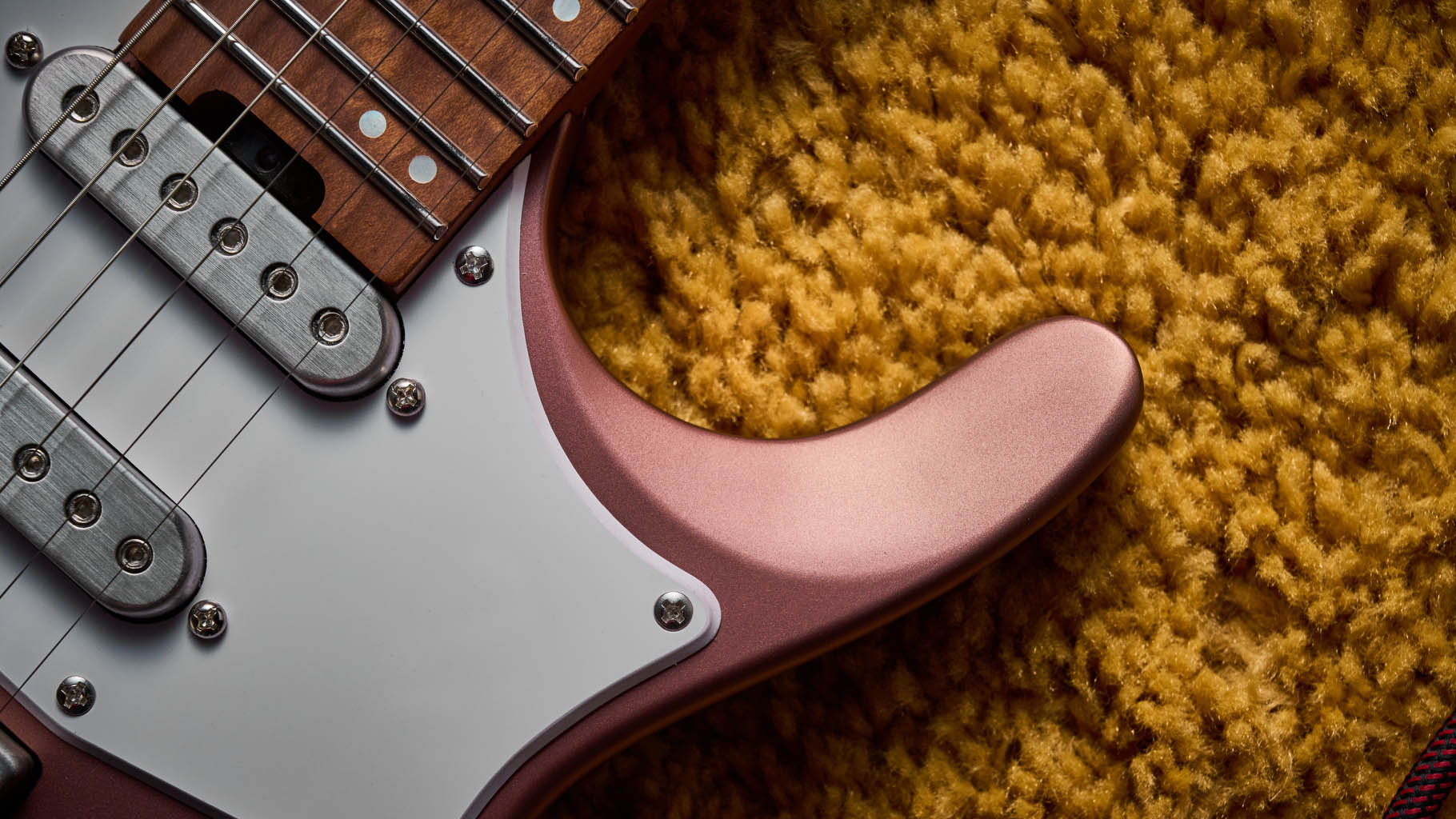
That’s the neck, and yeah, it’s a little conservative, playing the percentages, but playability doesn’t end with the neck. The weight, the contouring of the body, plays a part, too, and while the Q54W feels unnaturally light at first, you soon get used to it, and how it balances on a strap.
That scooped-out excavation of the body not only relieves it of some weight (remember, this is not chambered in any way) but allows you to wedge the guitar on your thigh mid-performance with no appreciable affect on the tuners (your mileage may vary).
All this might even encourage you to dance with the guitar, y’know, should the mood grab you. Or to position it better for the 9:16 aspect ratio that content creators have to live with. Hey, many of whom could well be the Q54W’s core demographic.
Sounds
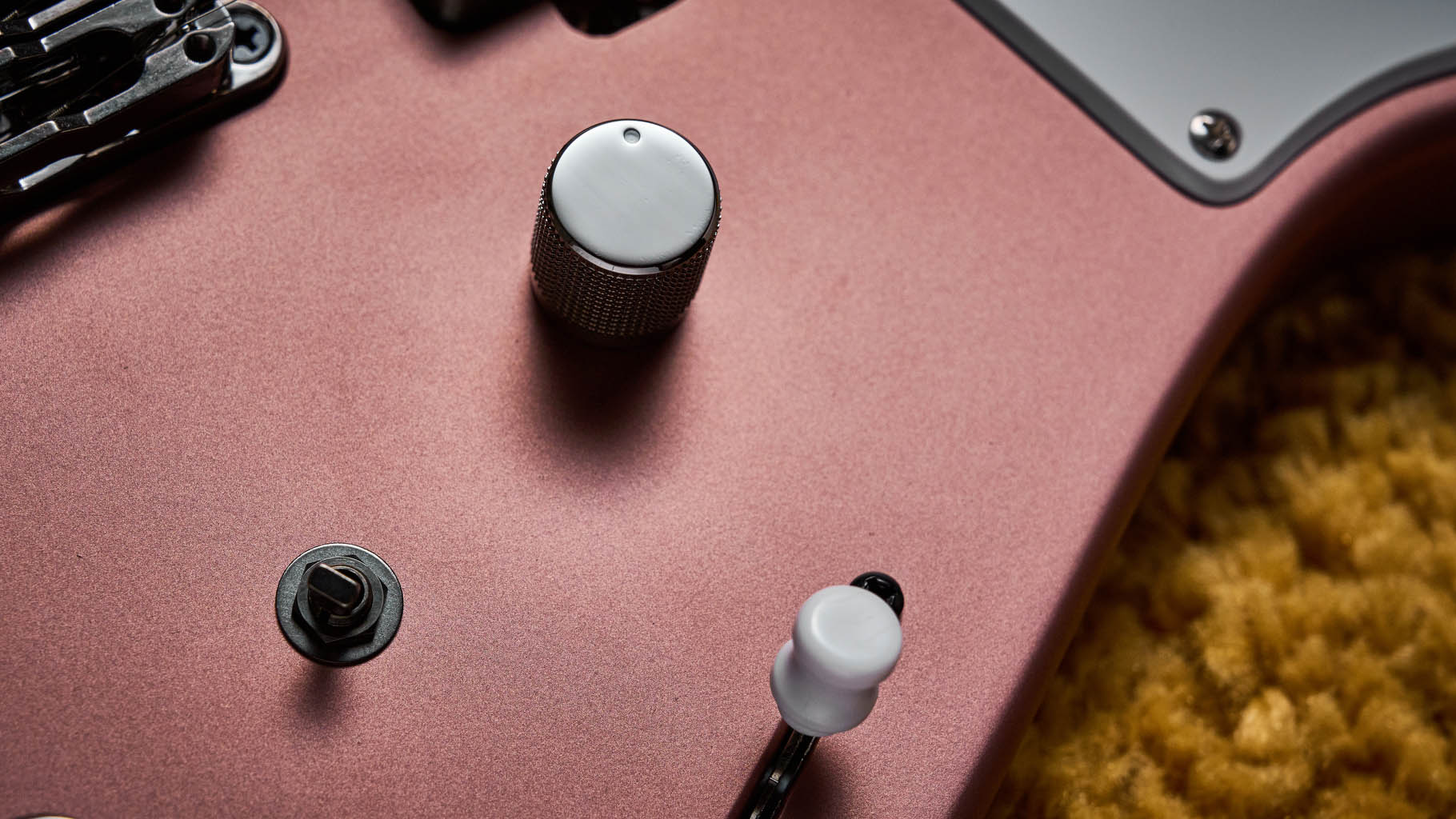
Sounds rating: ★★★★½
Ibanez maintains that the Q58 humbucker was designed specifically for the headless guitar. Does the headstock’s size, or even its very presence, make much of a difference to how it reacts with the pickup? Who can say.
The only way to confirm this would be to A/B this with the RG Axe Design Lab SML721, which does have a headstock and a pair of these pickups. What we can say is that it is a typical high-output ceramic humbucker, bright and bold, abundant clarity and top-end, punchy – and it feeds the drive channel to bursting, again, as you might expect.
All that clarity you hear when played clean presents as pinch-harmonic readiness when the gain is cranked up. The tone control can roll-off that top end, giving you a passable neck ‘bucker tone. What’s less impressive is how the humbucker sounds when you're rolling back the volume; it doesn’t clean up all that sweetly.
The R1 single-coils similarly have a ceramic magnet, and pair well with the humbucker, sounding a little overwound and hot when selected individually, with that gentle Fender-ish scoop giving it that percussive, precise attack for single-notes, whole chords sounding full.
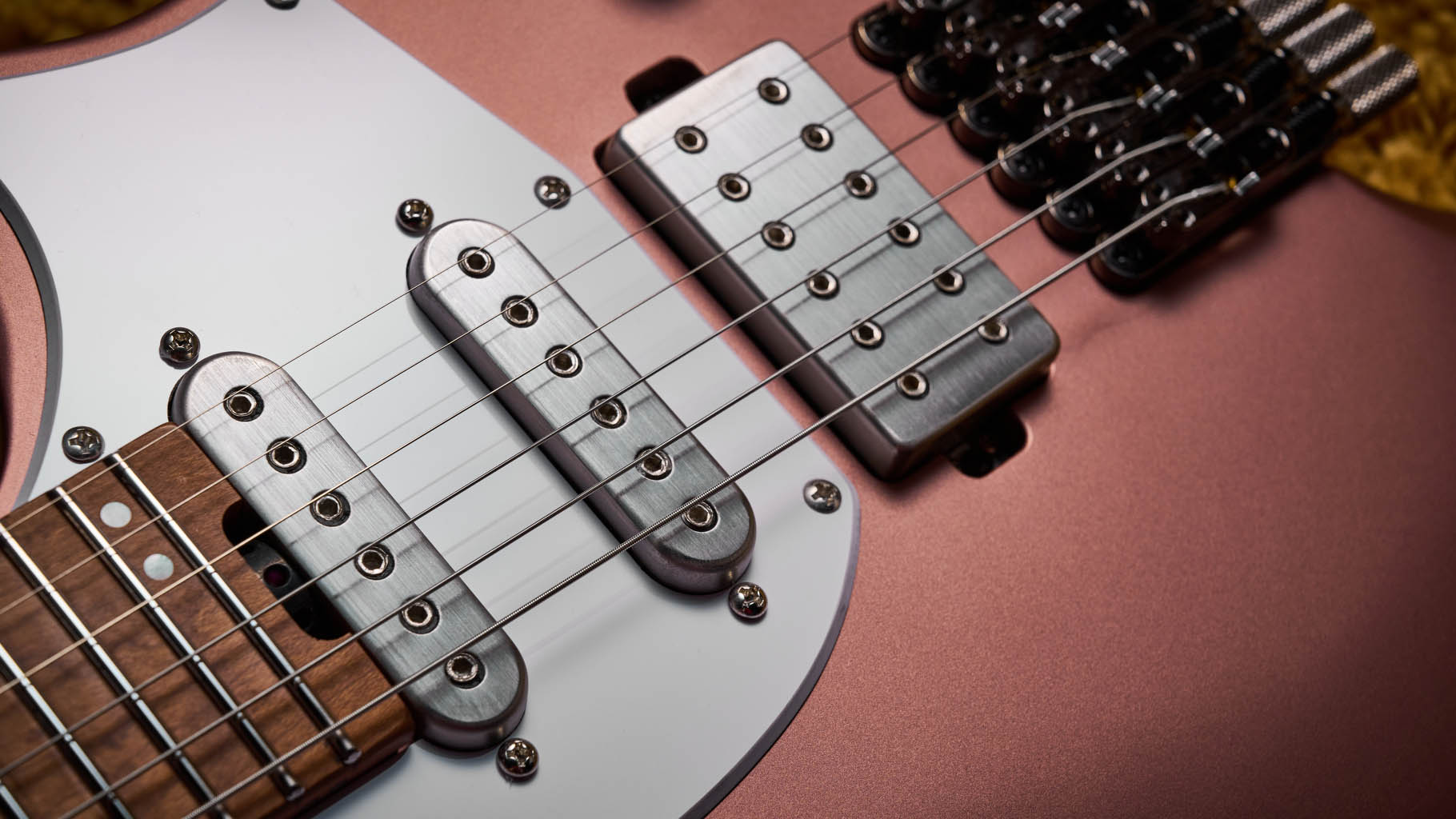
If you’ve got as neck position single-coil it’s always a relief that you can get passable Strat spank out of it, as we can here
Whether it’s a future-forward headless build such as this, or vintage reproductions, if you’ve got a neck position single-coil it’s always a relief that you can get passable Strat spank out of it, as it delivers here.
But with Q54W, the wiring configuration suggests a little social engineering at play, like we are at the Christmas party and Ibanez has positioned the chairs to encourage us to mingle.
I went into this review prepared to have my appreciation of headless guitars changed, but came out once more suspecting that the core mission of this model – and of all Ibanez guitars with Dyna-Mix switching – is to redefine what we mean when we talk about “in between tones”. There are just so many of them.
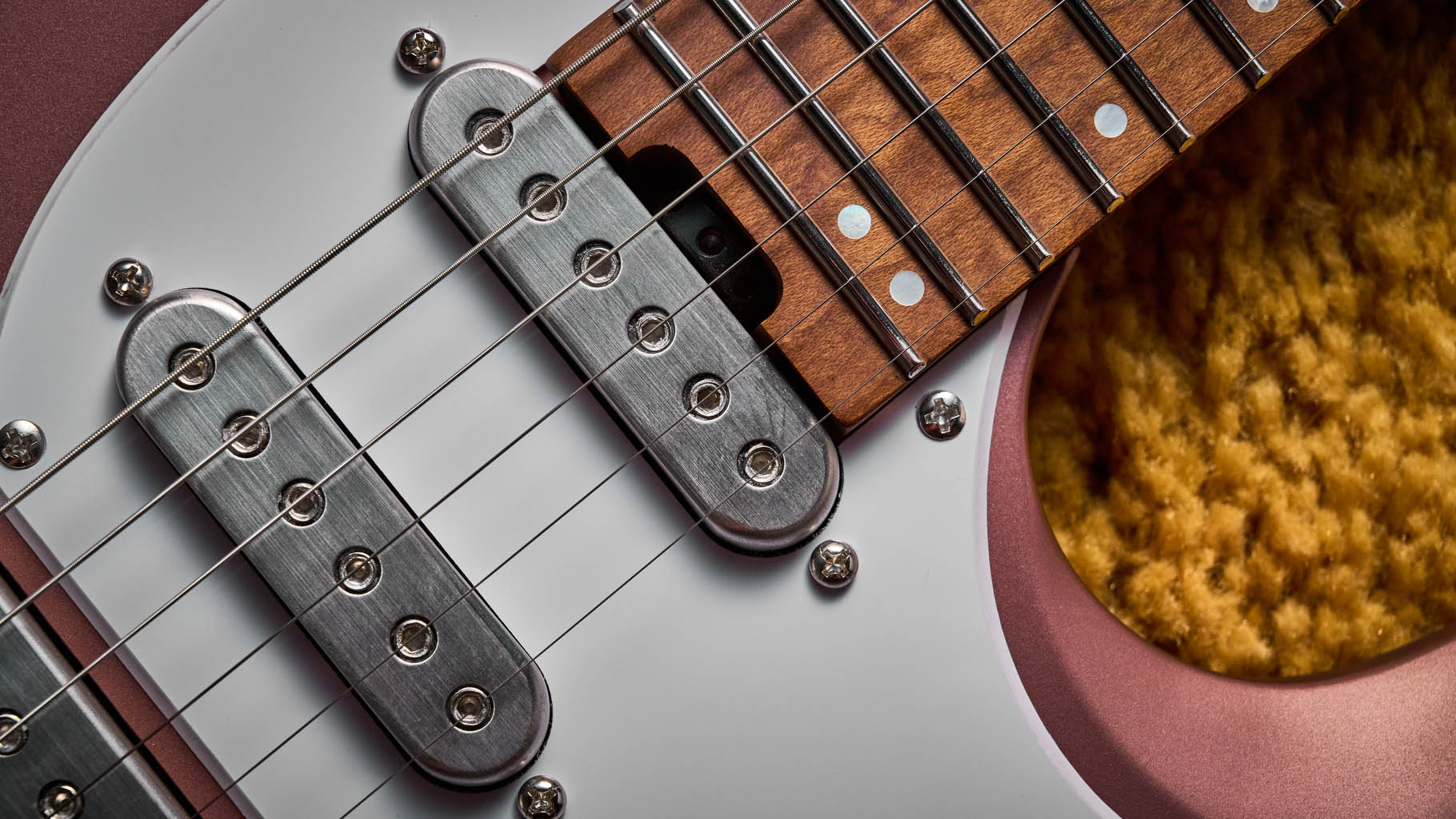
With the Alter Switch in Position 1, the HSS configuration works as expected: neck single-coil, neck and middle single-coils together in parallel, middle single-coil, middle and humbucker’s inner coil in parallel, humbucker alone. Versatile but conventional.
In Position 2, however, the Alter Switch throws up some humbucking options for the in-between positions, blending those pickups in series, and for those who have the needle in the red with regards gain – or indeed with complex signal chains with pedals such as phasers and flangers that accrue noise – this expanded switching system makes perfect sense.
More wooly still is the third position with the Alter Switch in Position two, giving us two single-coils in series and the humbucker. It’s a mighty meaty surprise from a bona-fide featherweight guitar
It is a lot to get used to. You might wish that the Q54W had presets. But you will get used to it. It’s an intuitive way to get more out of the pickup configuration, with that Position 2 series combo of middle and neck pickups in unison almost enough to compensate for not having a full-on proper neck humbucker. It’ll give you that nasal high-gain tone that can be useful for cleaning up sweeps and arpeggios.
It’ll give you some rounded bass and midrange presence to give the fuzz pedal something to work with. The raw bloom of a Beetronics Tuna Fuzz seems likes an inappropriately lo-fi choice to test this theory out, but it worked nicely for putting some wool on the powerchords.
More wooly still is the third position with the Alter Switch in Position two, giving us two single-coils in series and the humbucker. It’s a mighty meaty surprise from a bona-fide featherweight guitar.
Looking for a more angular sound, more trebly plink for a hyper-compressed sound with slapback delay? Again, with the Alter Switch on Position 2, you can select the humbucker’s inner coil, and my personal favourite – even if the symmetry suggests it – is the combination that pairs the bridge-side outer coil of the humbucker with the neck single-coil.
As Ernie Ball might describe it, this presents us a “skinny top, heavy bottom” sound that works great with a clean, processed tone.
Verdict
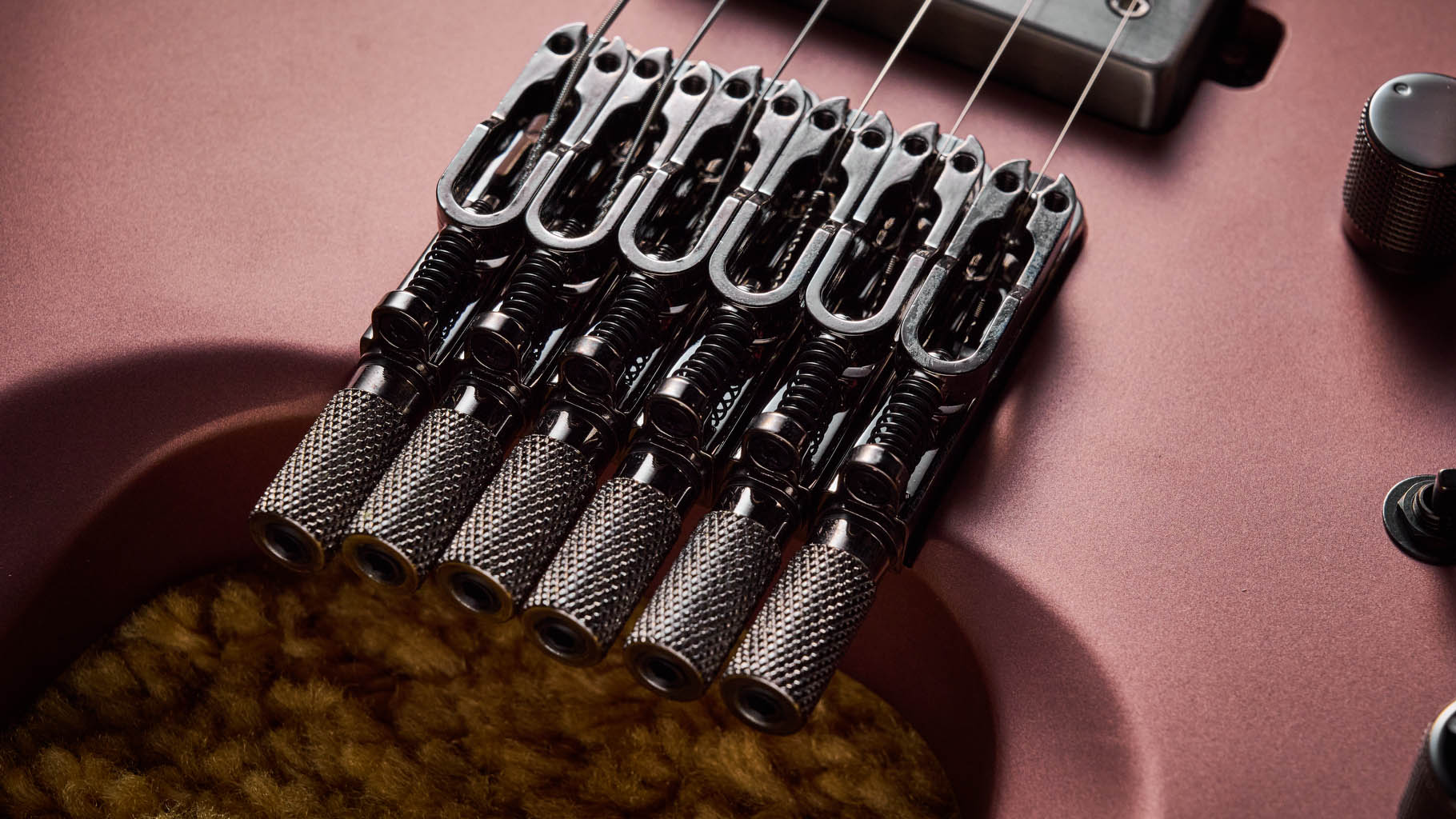
Okay, so the Ibanez Q54W did not make me look as cool as Tin Machine-era David Bowie. It was a long shot anyways. Nor did it make me play like Allan Holdsworth or Eddie Van Halen. That’s no surprise; it is but wood and steel, not Gandalf the Grey. But it was a lot of fun. It was a revelation in its own right.
There is a certain liberation that comes from doing away with the headstock and playing a full-scale instrument that looks and feels like it has had much removed.
We should not let the lack of the headstock distract us from the effectiveness of the body’s contours and cutaways, and the myriad precision cuts that Ibanez’s Indonesian plant has made to trim down what was once, essentially, an S-style and now presents as a 21st-century neo-shred guitar.
The Q stands for Quest. Is the quest to propagate the use of headless guitars? ... I’d prefer to think of the Q54W as a choose your own adventure guitar
Ironically, the most considerable piece of timber you will hold is the neck. Ibanez is going for the high-performance vibe but it’s not going to extremes here, playing the percentages, trying to take this design mainstream.
The Q stands for Quest. Is the quest to propagate the use of headless guitars? Shaped by players such as Ichika Nito, Plini, Per Nilsson, guitar culture at large will decide that. I’d prefer to think of the Q54W as a choose your own adventure guitar. Ibanez has broken the rules of conventional guitar design. Pick it up and break the rules of guitar playing. Sometimes that is all you want from an instrument, the permission to do something differently.
Guitar World verdict: The headless modernity of it all might make the Q54W a difficult guitar for every player to truly love, but it’s an easy guitar to like, a very easy guitar to play, and one that presents us with so many core tones that it feels like a pre-modded instrument for rock and pop, metal and fusion, and for thinking beyond genre and style.
Test | Results | Score |
|---|---|---|
Build quality | Very tidy fit and finish. Not much to complain about here. Kudos to Ibanez for the bridge design. | ★★★★½ |
Playability | So lightweight, ergonomically radical, with a crowd-pleasing neck and slinky stainless steel frets. | ★★★★½ |
Sounds | We might wish that bridge humbucker was a little more dynamic but the HSS configuration plus the switching makes it so versatile. | ★★★★½ |
Overall | Modern, fun, fresh, keenly priced, and a guitar that should encourage you to throw away your go-to licks in search of adventure. | ★★★★½ |
Also try
Strandberg Boden Essential
Price $1,099/£1,099/€1,409
Strandberg's entry-level model is even lighter than the Q54W and has the patented EndurNeck profile, which could be the ace-in-the-hole.
Ibanez QX527PB
Price $1,299/£999/€1,429
If you are all in on the Q54W's 21st-century ergonomics, want to push guitar playing further, then this more upscale 7-string variant in the Quest series has all that and more – and it's got the multi-scale format and bougie poplar burl top.
Ibanez Ichika Nito ICHI 10
Price $1,099/£849/€1,159
Ichika Nito's super-cool signature variant presents us with three R1 single-coils, pseudo-humbucker sound thanks to the Dyna-Mix switching, plus there are some subtle upgrades such as the 24 Jescar EVO Gold frets.
Hands-on videos
Ibanez
Jack Gardiner
Jonathan Horsley has been writing about guitars since 2005, playing them since 1990, and regularly contributes to publications including Guitar World, MusicRadar and Total Guitar. He uses Jazz III nylon picks, 10s during the week, 9s at the weekend, and shamefully still struggles with rhythm figure one of Van Halen’s Panama.
You must confirm your public display name before commenting
Please logout and then login again, you will then be prompted to enter your display name.
